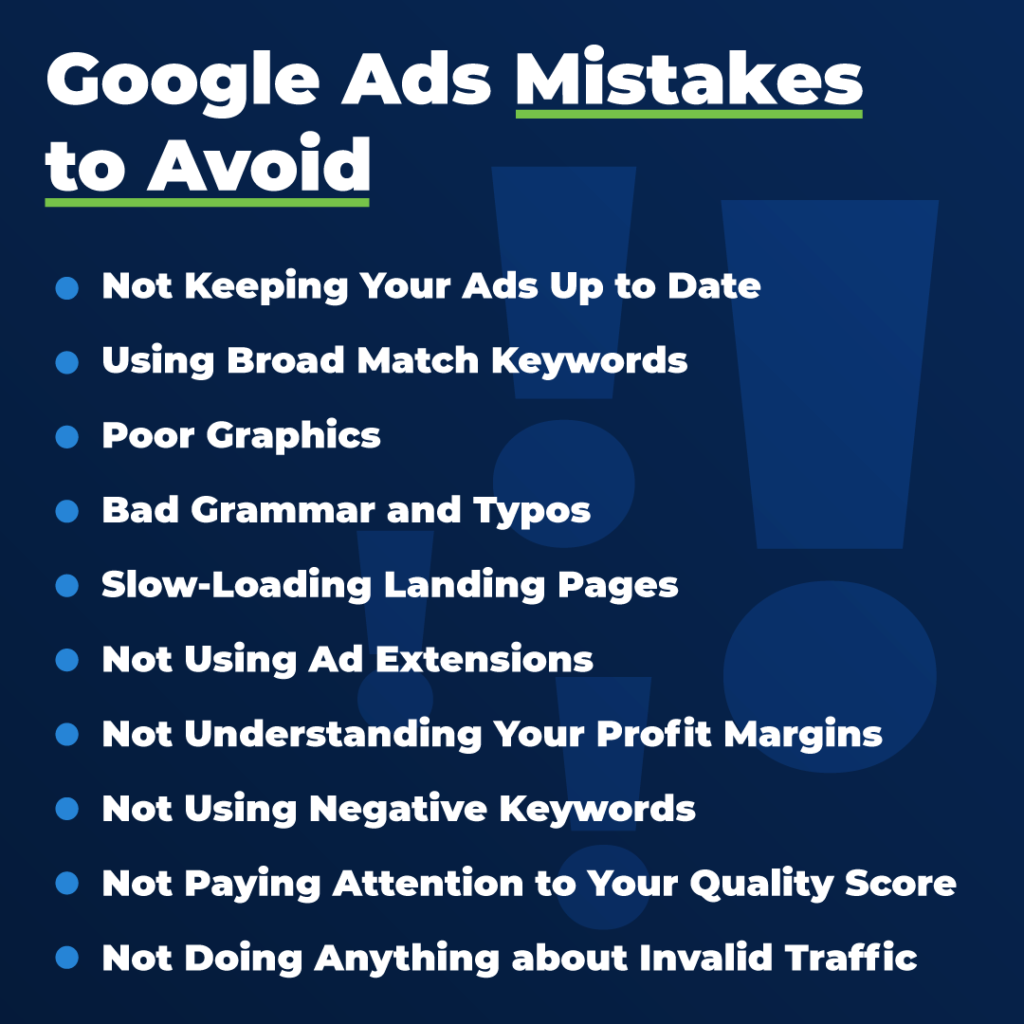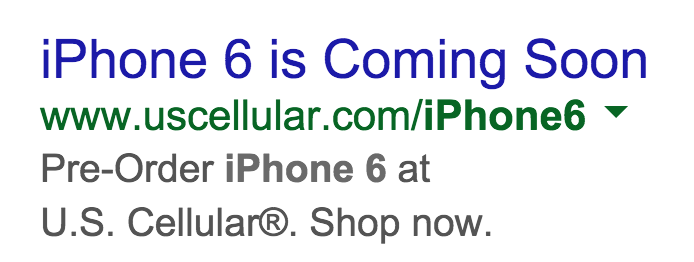Google Ads (previously known as Google AdWords) can definitely bring quite a lot of benefits to your business (and even more so if you activate in some niches where PPC is more profitable). However, you have to do this the right way — which means you should definitely avoid common Google Ads mistakes. What are some of the most widespread Google AdWords examples from 2020 not to follow in 2021?
We have gathered them for you — so read on if you want to find out more.

Bad Google AdWords Example #1: Not Keeping Your Ads Up to Date
No matter what type of ads you might run, you absolutely have to keep them up to date. The internet is full of bad Google AdWords examples that feature products that were launched years ago or are somewhat stuck in seasonality (nobody likes seeing Christmas ads in July, right?). Make sure you always keep track of ads that might have a short “shelf life”!
Example? This ad found by Jeff Sauer in 2015, which featured the launch of a product that had already launched one year before…

Bad Google AdWords Example #2: Using Broad Match Keywords
There’s room for broad match keywords in PPC, of course. Sometimes, they can prove to be actually profitable. But overall, you want to avoid using broad match keywords for a simple reason: they don’t nail search intent. That means that although your keywords will display ads when people run certain searches, the same people might not be intent on actually buying anything — which means you’re pretty much wasting your ad budget away, even if they end up clicking on the ad.
Bad Google AdWords Example #3: Poor Graphics
If you run Display ads, make sure your graphics are on point. In general, people on the internet have a pretty low attention span, so good graphics will draw them in and make them want to click on your ads. Invest in quality design and it will definitely pay off.
And oh, by the way, don’t be afraid to get a little creative with your designs. Make sure they follow best practices, of course, but try to think out of the box a little too. Who are your customers? What are they likely to appreciate? What kind of colors are they more drawn to? Think of these things before releasing your ads into cyberspace!
Bad Google AdWords Example #4: Bad Grammar and Typos
Need we say more? Bad grammar and typos are bad for business, and that’s the end of the story. We all make mistakes, it’s natural. But that’s no excuse for not proofreading your ads before they go live.
Remember, they will be shown to many people, and if you build a brand reputation on bad grammar, you are more than likely going to send out the wrong message (lack of attention to detail, lack of professionalism, and even not being trustworthy enough for people to buy from you).
Bad Google AdWords Example #5: Slow-Loading Landing Pages
Your ads are just half of the deal. Once people click on them, they will land on a page (very aptly named…”landing page”).
This is where you have the opportunity to explain your product more, and show people what it can really do for them. Make sure your page looks good and follows best practices in Conversion Rate Optimization, but also make sure the technical side of it is flawless. More specifically, make sure it loads as fast as possible because people might lose patience and interest if they have to spend too much time in front of a page that’s loading (and loading, and loading …🔃)
Here are just a couple of resources to help you speed up your loading speed:
- Google Developers page on page speed
- Tool that helps with page speed by providing you with webpage insights
Bad Google AdWords Example #6: Not Using Ad Extensions
Ad Extensions are there for a reason: to help you grab attention and engage people into clicking on your ads. Use them intelligently and you will only reap benefits.
Why are they such a click-driver?
It’s simple: they provide searchers with more information (like how many reviews your product has, your phone number, or your address). This makes your business look more trustworthy in the eyes of potential customers (not to mention it sets you apart from the other ads and organic results shown on the SERP).
Bad Google AdWords Example #7: Not Understanding Your Profit Margins
OK, we get it. Numbers can be ugh.
But working without clear numbers in mind is like being blindfolded (and spending a lot of money like this).
Keep an eye on your profit margin (and keep in mind that different industries might have different average profit margins too).
Here’s a quick way to calculate your profit margin on your Google Ads:

RPC = Revenue per Click
CPC = Cost per Click
Bad Google AdWords Example #8: Not Using Negative Keywords
Negative keywords allow you to narrow down the pool of searchers your ad will be shown to, according to their actual search intent. A smaller pool of potential clickers (and buyers) might sound like a bad idea, but the truth is that your goal is not to have a lot of clicks on your ads, but a lot of relevant clicks, coming from people who are interested in buying products in your niche.
Here’s why you should use negative keywords, more specifically. And here’s another article on our blog on how to make the most out of negative keywords this year.
Bad Google AdWords Example #9: Not Paying Attention to Your Quality Score
You should constantly work on improving your quality score. This will affect how your ads are displayed, and thus, it will influence how profitable they are. It’s as simple as that. 😊
Bad Google AdWords Example #10: Not Doing Anything about Invalid Traffic
Of all the Google AdWords examples you shouldn’t follow, this is by far one of the worst ones. Invalid traffic is a multi-billion dollar issue (one that we’re tackling very well at ClickGUARD, and we’re not just saying this to brag). Getting a grip on what really happens in your Google Ads, and banning invalid traffic sources is essential.



